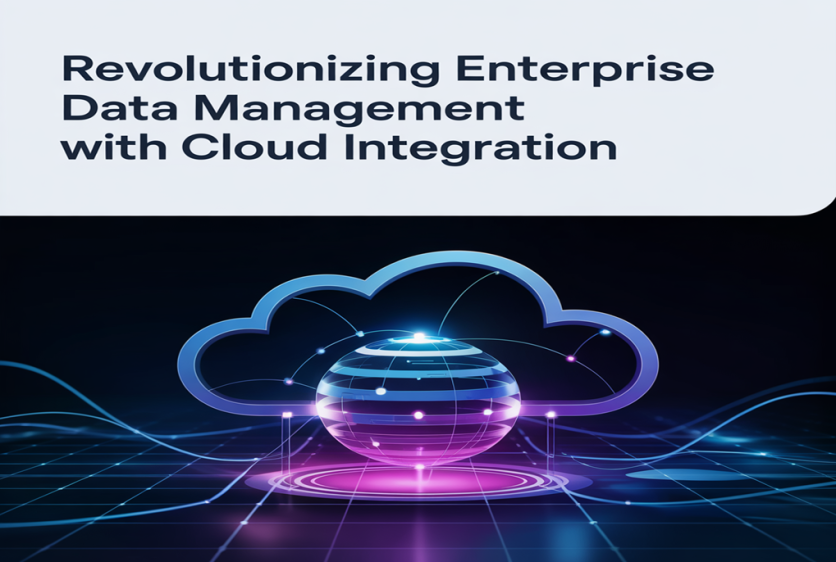
In today's world, Sudhakar Guduri, a visionary researcher with a focus on cloud data integration, explores transformative trends reshaping enterprise data management. With a deep passion for digital transformation, he dissects key innovations fueling the next wave of technological evolution.
From On-Premise to Cloud: A Paradigm Shift
Enterprise data management has undergone a significant evolution, moving from rigid, on-premise architectures to highly flexible cloud-native models. Traditional methods, often plagued by scalability constraints and prolonged deployment cycles, are rapidly being replaced. By 2022, the dominance of on-premise systems had dwindled to a mere 35%, down from 88% just a decade earlier. Organizations faced high maintenance costs, slow scaling, and underutilized infrastructure. The rise of cloud platforms changed this narrative, offering elasticity capable of handling 200–300% workload surges without performance lags. With the growth of SaaS applications from a handful to over 150 per enterprise, the demand for seamless, scalable data integration has become critical.
Innovation in Integration Platforms: The Cloud Advantage
Leading cloud integration platforms have introduced groundbreaking capabilities, redefining enterprise data management and transformation strategies. These next-generation solutions process complex transformations three times faster than legacy systems and significantly boost concurrent processing capacities, enabling unprecedented scalability. Their flexible, consumption-based pricing models have slashed operating costs by up to 40% while improving budget predictability. Through automated schema discovery, intelligent mapping, and minimal coding, these platforms now cut integration development time by up to 60%. Enterprises leveraging these technologies report a 70% decrease in deployment times, an 85% reduction in infrastructure incidents, and stronger data governance. The dynamic, resilient nature of modern cloud platforms aligns perfectly with the evolving landscape of enterprise needs and competitive pressures.
Serverless Architectures: Breaking Traditional Boundaries
The emergence of serverless architectures has been a turning point for cloud-based data integration. By removing the burdens of infrastructure management, serverless computing allows engineers to dedicate 70–80% of their time solely to developing data flows. Infrastructure overhead has been reduced by nearly 45%, while deployment frequencies have surged by 150–200%. Serverless models dynamically allocate resources based on demand, enabling enterprises to handle immense data volumes in real time without manual provisioning. This model also offers significant cost savings, as billing is aligned with actual resource usage, eliminating the traditional inefficiencies of idle servers.
Real-Time Responsiveness and Cost Efficiency
Serverless architectures are not only efficient but also highly responsive, offering unmatched flexibility for modern enterprises. Their event-driven nature allows workflows to react instantly to data changes, system triggers, or scheduled events, enabling pipelines to refresh dashboards, reports, analytics, and machine learning models in minutes instead of hours. Enterprises have found substantial value in this shift: faster decision-making cycles, improved agility, enhanced scalability, greater cost optimization, and a marked decrease in resource waste and overhead. This agility has been critical for businesses aiming to stay competitive in increasingly dynamic, data-driven markets, where the ability to adapt, innovate, and deliver real-time insights often defines long-term success, resilience, and leadership.
Cloud Integration: Fueling the Future of Enterprise Strategy
Cloud-based integration platforms are no longer supplementary; they have become the backbone of enterprise digital transformation initiatives. As enterprises manage ever-larger, more complex, and increasingly distributed datasets, the need for robust, scalable, secure, and cost-effective integration strategies has intensified dramatically. Enhanced capabilities such as machine learning-based data quality monitoring, intelligent anomaly detection, and automated data lineage tracking further bolster their appeal and effectiveness. These innovations not only ensure seamless, real-time data flow across systems but also strengthen governance, security, and regulatory compliance—all of which are crucial in today's highly regulated, data-driven business environment.
The Road Ahead
As enterprises continue to expand and diversify their digital ecosystems, cloud-based data integration will play an even more pivotal and strategic role. The continued advancement of serverless models, intelligent automation tools, and AI-driven data orchestration platforms will only deepen the value proposition for businesses aiming to derive actionable insights faster, more accurately, and more cost-effectively. In a world increasingly defined and shaped by data, the ability to seamlessly integrate, process, analyze, and act on information dynamically across multiple environments will differentiate true industry leaders from laggards struggling to adapt to rapid technological evolution.
In conclusion, Sudhakar Guduri's insightful exploration compellingly reminds us that the groundbreaking innovations driving cloud integration today are strategically laying the groundwork for a more agile, intelligent, and data-driven future—enabling organizations to scale efficiently, respond rapidly to change, and unlock unprecedented opportunities for digital transformation.
ⓒ 2025 TECHTIMES.com All rights reserved. Do not reproduce without permission.




